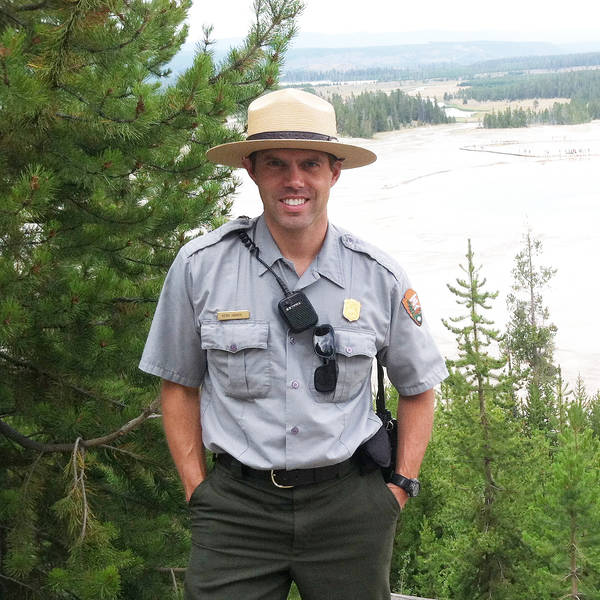Winter 2013
Symphony in Bronze
Saint-Gaudens National Historic Site celebrates the sculptor who gave form to some of our nation’s memories.
On the morning of May 31, 1897, hundreds of people assembled on Boston’s Beacon Street for the unveiling of a monument to Civil War Col. Robert Gould Shaw, commander of the war’s first African-American regiment. Just after 11 a.m. two of Shaw’s nephews removed American flags draped over the towering 11-by-14-foot memorial. A band launched into “Battle Hymn of the Republic,” and a 21-gun salute resounded across the city. And here was Shaw, riding off to battle among his marching soldiers, under the protective gaze of a floating angel. The crowd cheered, the soldiers beamed with pride, and the sculptor, Augustus Saint-Gaudens, let out a contented sigh. It had taken him nearly 14 years to finish the monument, but that morning, the suffering of such difficult labor disappeared in moments.
Today, a bronze cast of the memorial sits on display at Saint-Gaudens National Historic Site in Cornish, New Hampshire. Set amid rolling green mountains, 143 miles north of the original (which now stands as a part of the Boston African-American National Historic Site), the bronze figures look alive, making it easy to see why the site is often considered a living memorial.
ALL WORK AND SOME PLAY
“It’s the way a thing is done that makes it right or wrong. That’s the only creed I have in art,” Saint-Gaudens once said. He converted an old inn into his home and a hay barn into a studio and spent years in that barn completing a project. This site, where Saint-Gaudens summered with his family for 15 years and spent his last days, offers not only an intimate look into his life and work but a glimpse into the American Renaissance.
“A visit to Saint-Gaudens National Historic Site is a window into the time,” says Park Superintendent Rick Kendall. The park showcases Saint-Gaudens’ furnished home, exhibition galleries display his art, and his most famous monuments decorate the grounds. Each year, the park welcomes a sculptor-in-residence who helps preserve the creative spirit of the site.
Born in 1848 in Dublin, Ireland, Saint-Gaudens moved with his family to New York City when he was six months old. Growing up, he watched patriotic parades, Civil War soldiers marching off to battle, and on one historic morning, Abraham Lincoln on the way to his inauguration. These experiences captured the young man’s heart and hands, and he decided to become a sculptor. Leaving school at age 13, Saint-Gaudens spent six years as a cameo cutter’s apprentice, creating miniature relief sculptures, then traveled to Paris to study sculpture at the famed École des Beaux-Arts. In 1870 he relocated to Rome, where he honed his craft for five years and courted his future wife, Augusta Homer. Saint-Gaudens returned to America when he was 27, and received his first major commission a year later.
The sculptor created more than 150 artworks during his life, ranging from public monuments to portrait pieces. He created the 12-foot Standing Lincoln in Chicago’s Lincoln Park and the Sherman Monument on Manhattan’s Fifth Avenue, designed the $20 double-eagle gold piece—often considered the most beautiful U.S. coin ever minted—and served on the creative team that redesigned the National Mall in Washington, D.C. Saint-Gaudens was elected to the American Academy of Arts and Sciences in 1896; he received honorary degrees from Harvard, Princeton, and Yale.
Saint-Gaudens is renowned for his mastery of bas-relief, a difficult technique in which figures protrude slightly from a flat background. He is also known for creating some of the country’s first heroic depictions of African Americans, affirming their humanity and patriotism years before the civil rights movement.
“It is entirely possible to produce technically stunning works that are lifeless,” says Amanda J. Sisk, the park’s 2012 sculptor-in-residence. “But Augustus merged his classical training with contemporary subjects, and went beyond many of his colleagues by successfully infusing his works with an extra breath of life.”

National Parks
You can read this and other stories about history, nature, culture, art, conservation, travel, science and more in National Parks magazine. Your tax-deductible membership donation of $25 or more entitles…
See more ›New Hampshire held a special place in Saint-Gaudens’ heart. Reflecting his belief that America was the heir to Greek democracy, an enlightened system of law and Renaissance humanism, Saint-Gaudens designed parts of his Cornish estate to reflect the Italian countryside, named his home “Aspet” after a village in the Pyrenees, and declared nearby Mt. Ascutney his Mt. Olympus. When Saint-Gaudens invited students and other artists to visit the area, the Cornish Arts Colony quickly became the epicenter of the American Renaissance.
Even after being diagnosed with colon cancer in 1900, Saint-Gaudens continued to create art and mentor students until his death in 1907. His home opened as a museum in 1927, and in 1965, Saint-Gaudens National Historic Site was established—the first site devoted to a visual artist and the only national park unit in New Hampshire.
Today, visitors can tour his home and studio, gaze at nearly 100 of his artworks, and enjoy summer concerts from Memorial Day through the end of October. Although the exhibit buildings close for winter, the grounds remain open and accessible during daylight hours.
“Saint-Gaudens National Historic Site is devoted to arts and culture and creativity—the beauty and entertainment that make up our everyday lives,” says Kendall. “It is a park unlike any other.”
About the author
-
 Kevin Grange Contributor
Kevin Grange ContributorKevin Grange is the award-winning author of “Wild Rescues: A Paramedic’s Extreme Adventures in Yosemite, Yellowstone, and Grand Teton,” “Lights and Sirens: The Education of a Paramedic,” and “Beneath Blossom Rain: Discovering Bhutan on the Toughest Trek in the World.” He has written for National Parks, Backpacker and the Orange County Register. He has worked as a park ranger and paramedic at Yellowstone, Yosemite and Grand Teton national parks and currently resides in Jackson Hole. Visit him at www.kevingrange.com.



